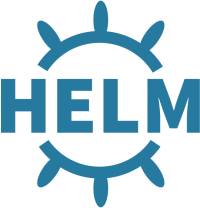Are you manually deploying and maintaining your applications on a Kubernetes cluster? Consider usin
Why use Helm?
As mentioned in the introduction of this article, Helm offers a powerful way to deploy your applications using a predefined set of resources. Everything you need to run your application is defined in a Kubernetes Chart. If you have a clear vision of how the underlying infrastructure of your application should be, you could easily describe this infrastructure in such a chart. Deploying applications using a chart should be favored instead of a manually build setup. Not only for guaranteeing reproducible environments, but also lower the risk of manual mistakes, to keep a clear overview and to manage future releases of your application. Also, Helm lets you quickly rollback to previous versions of your app.
Building your Kubernetes charts
In specific and more complex situations, you might want to create your own charts. Since Helm offers clear documentation on all best practices, we’re not going to give you an in-depth explanation of how to create your charts, but we would like to provide you with some tips you should keep in mind:
- Make sure your Kubernetes cluster supports persistent volumes. If you are not sure, you are risking data loss.
- Only use well-maintained packages. If you are not sure, stability and continuity of your application are not guaranteed.
- Consider using your private registry. That allows you to use your custom containers and guarantees persistance of your images.
Using pre-defined charts
As Helm is the most popular package manager for Kubernetes and is backed by companies like Microsoft, Google and Bitnami. There are a lot of charts for existing applications. Using these charts makes sense. The charts offered on the Kubernetes repository are usually well-tested and reviewed by the community. Of course everything you add to your production environment should be tested thoroughly, as it could influence everything that’s important to you. So, if you decide to use pre-defined charts, use them as a startingpoint and make you there are suited for your needs. Adjust them if necessary.
Pre-written Charts can be found at the official Kubernetes repository. These charts are maintained by the Kubernetes community. Alternatively, you could use the KubeApps dashboard to deploy pre-written charts.
Helm & Cloudlets
We offer native Kubernetes implementation as a part of our infrastructure. All prerequisites to start using Helm are met. Need help or advise using or configuring Helm? Feel free to contact us and we will help you optimize your infrastructure.